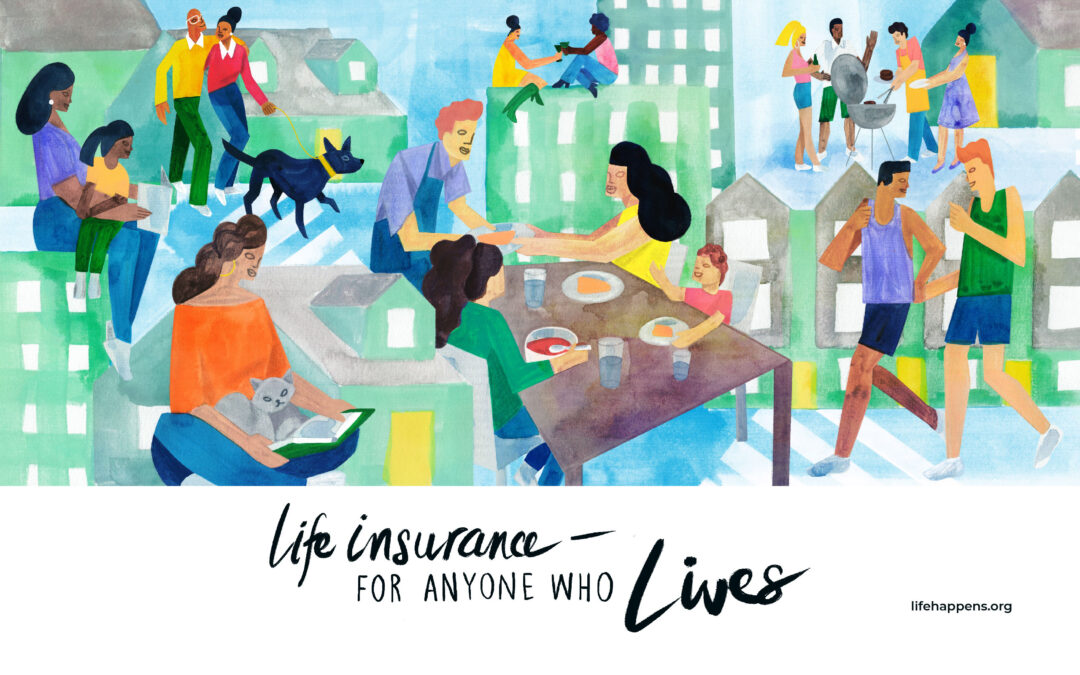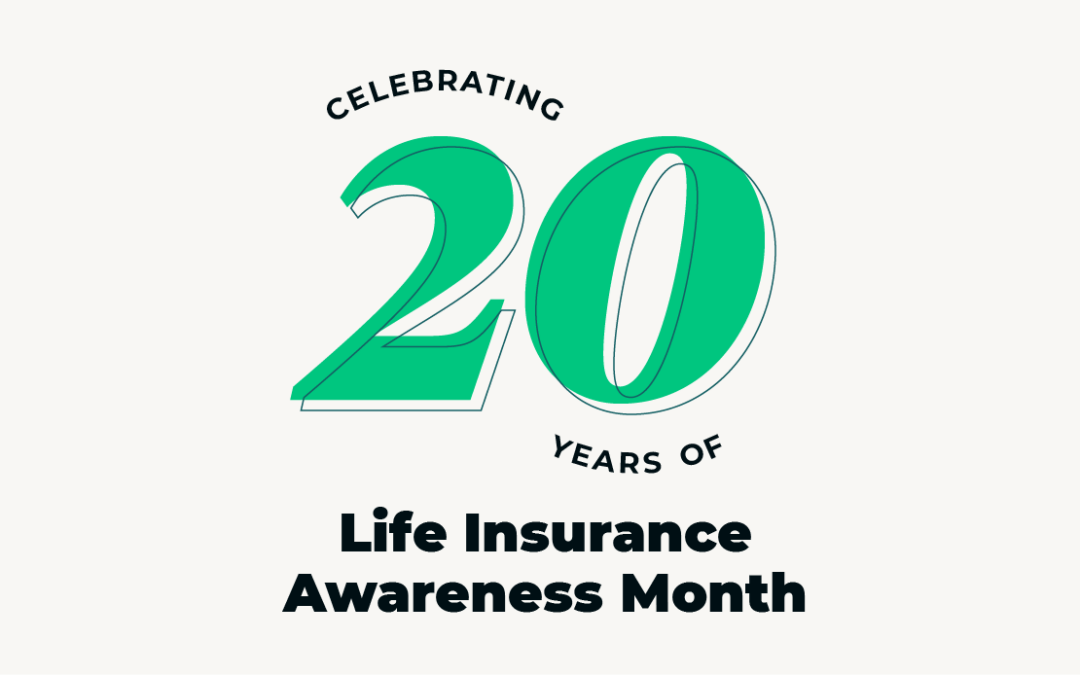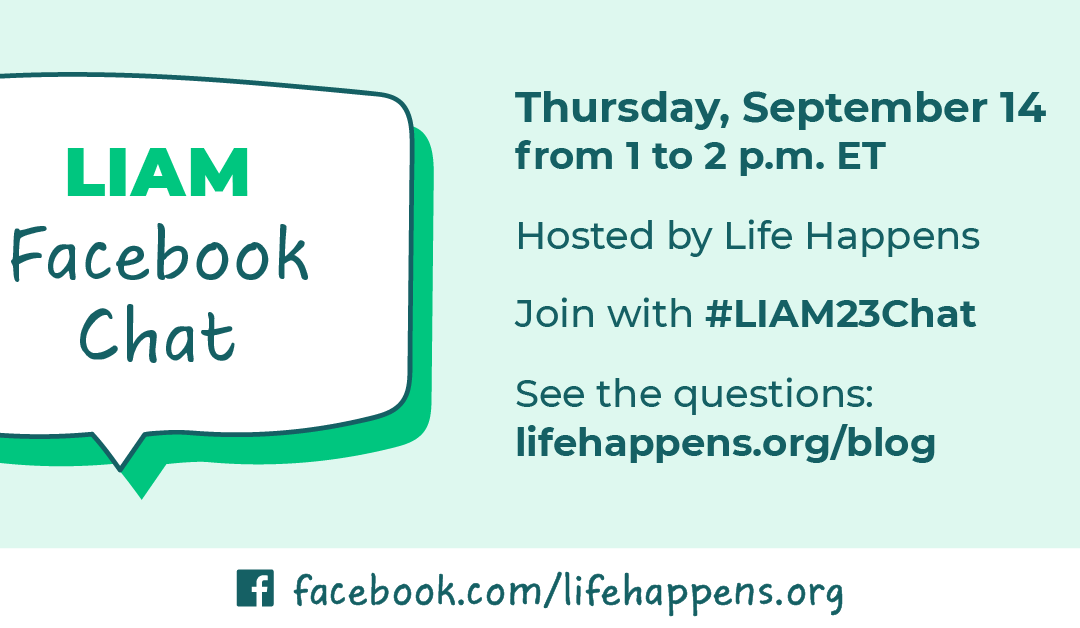
Meet Sirin Thada, Artist in Residence for Life Happens
 Earlier this year, we partnered with Thai-American artist Sirin Thada to create illustrations that reflect the theme, Life Insurance: For Anyone Who Lives.
Earlier this year, we partnered with Thai-American artist Sirin Thada to create illustrations that reflect the theme, Life Insurance: For Anyone Who Lives.
Here’s a closer look at her process and what she had to share about her work.
Lightning Round with Sirin
What are three words to describe your artistic style?
Warm, vibrant, wabi-sabi.
What is one thing most people would be surprised to know about you?
My first real job was working as a lawyer at a big NYC law firm.
How would you explain life insurance in five seconds?
It’s peace of mind. If the worst were to happen, life insurance gives you the chance to help the ones you love, at a time when they will definitely need that comfort and help the most.
A Closer Look
Life Happens: How did you get started as an artist?
Sirin Thada: I’ve been drawing for as long as I can remember. It was something I always loved as a kid and just never stopped doing. I made sure to carry paper and pencil with me everywhere, and it was like having a best friend with you all the time. I didn’t actually make the leap to full-time illustration and art until much later in life. It was only after trying a few different career paths, and much soul-searching, that I realized art was the only career for me, despite how daunting the path seemed. But it’s always been a part of who I am and how I process the world.
LH: How would you describe your style?
Sirin: I love visible brushstrokes, ink bleeds and watercolor bloom—marks of human touch. My compositions tend to be tight and carefully considered, and I like juxtaposing them with paint, a medium that is unpredictable and has a life of its own.
LH: How did you come to the final work of art for this project? What was the process like?
Sirin: Even for me, talking about money and financial planning used to induce a lot of anxiety and stress. And no one wants to think about the possible death of a loved one. But the fact is, we all age, we get sick, and like all things in life, we are impermanent. Rather than letting fear of the inevitable paralyze us, why not choose to proactively enjoy every moment in life? If we accept there will be ups and downs, why not take the little extra step to prepare for the downs? Ultimately, I wanted the art to reflect what life is like when you embrace its nature fully, and these were the kinds of questions I asked myself in the process.
LH: What were you hoping to convey with your illustrations for Life Happens?
Sirin: On the theme of how life insurance is “for anyone who lives,” I wanted to convey just what “living” is truly about. It is more than just day-to-day surviving: It is about connecting, caring and thriving. From celebrations to family dinners to quiet nights alone reading, there is beauty in all those everyday moments. Life is unpredictable, but when you accept that unpredictability and face it without fear, and with a little bit of planning, you can appreciate those everyday moments with even greater ease and joy.


LH: Did you ever hear about life insurance growing up?
Sirin: Not really. As immigrants, my parents’ primary concern was making enough money to start their new life in America. They spent so much time working, to provide a good life for me and my brother, that teaching us about things like life insurance, and financial planning in general, were topics that kind of got lost during our upbringing. I’m sure the language barrier didn’t help either. So, I’ve been a bit late to achieving financial literacy, but I’ve been getting there over the years!
LH: What did you learn about life insurance? Have any of your views about life insurance changed since working on the project?
Sirin: As a full-time freelancer whose income varies widely from month to month, I’ve always been worried about things like health and disability insurance, retirement, and yes, life insurance. My husband and I have a few friends who quite tragically lost their partners. In some cases, children were in the picture too. Watching them get caught in a blinding storm of sorrow and grief, of just having lost their best friend and the entire life they shared, while also trying to arrange funeral plans, sort through finances, pay bills, and just eat, sleep, and stay afloat… It’s easy to see how life insurance would be the greatest balm at a time like that.
It means a lot to me to know that if the worst were to happen, I could still pay my mortgage and meet my basic needs until I regained a little bit of balance. Regardless of your budget, just a little forward-thinking can help ensure you are on the path to living your most fulfilling life with love and intention.
You can follow Sirin Thada on Instagram at @sirinthadastudio. To order Sirin’s artwork as a print for your home or office, click here. You can select your own dimensions, and the print will be shipped straight to your address.











